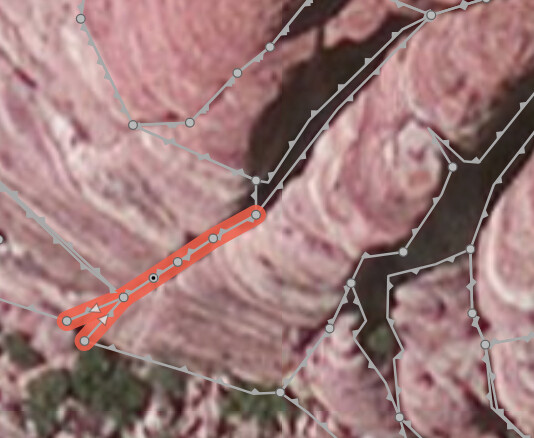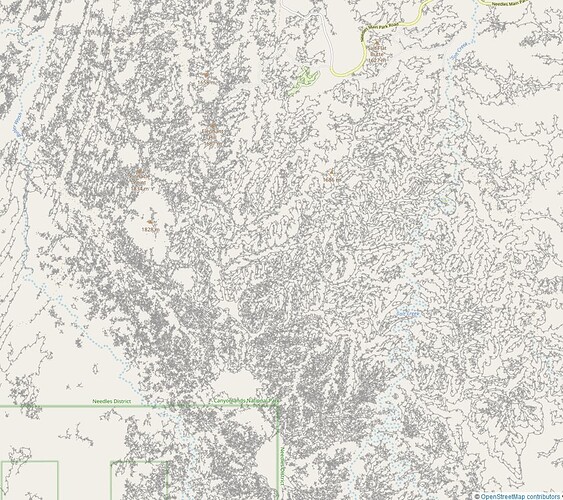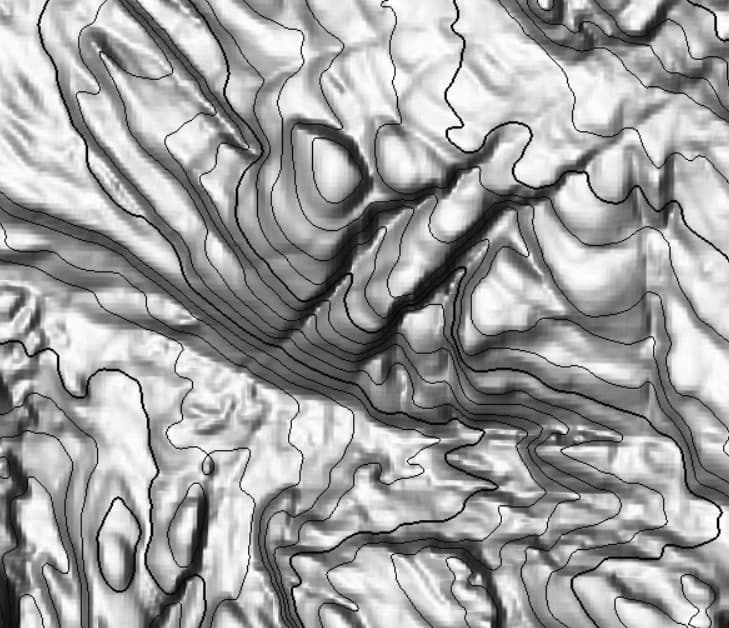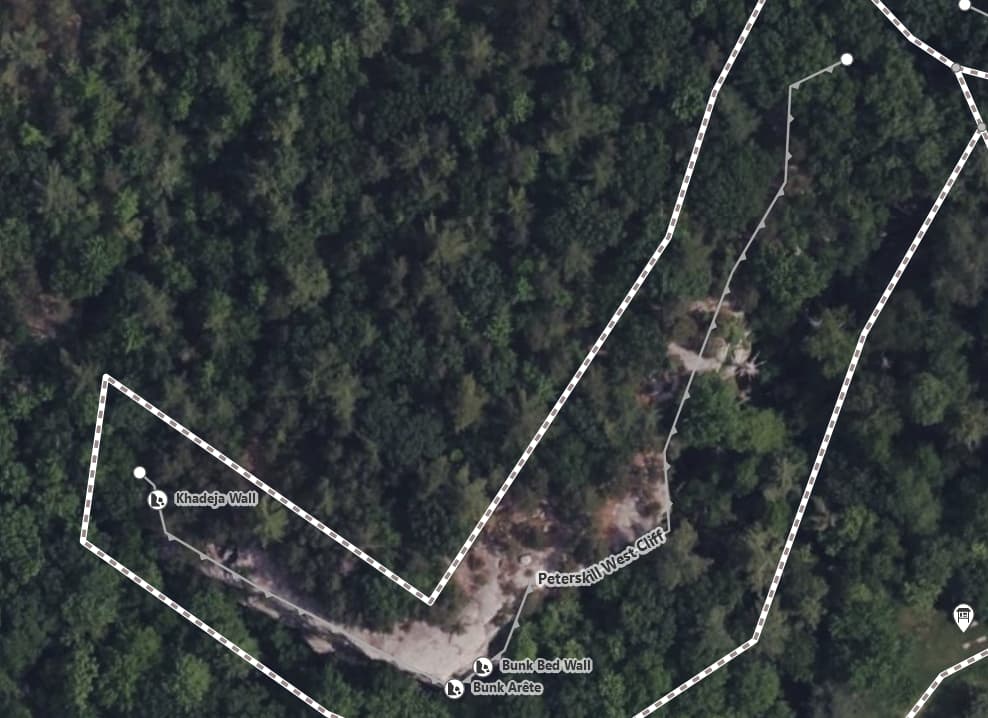I went to Red Rock Nevada to climb recently, and the OSM has a huge number of areas on it tagged natural=cliff (Here is an example area.):
The rock formations are complex, so I’m not sure how they should be drawn, but I don’t think it’s currently correct, according to the tag wiki. For example, Tag:natural=cliff says:
In the ID editor, the arrows on the line should be pointing out to the bottom of the cliff or low land.
Some of these lines are definitely not correct according to this, as the dark region is the bottom of the cliff, and the reddish region is the top:
It also says
A
cliff is a vertical or almost vertical natural drop in terrain topography
Some of these gray edges do represent steep drops, such as these:
But these other gray lines are not a cliff, they just represent a shallow crack in the steeply sloping rock face:

This is what this formation looks like from the side, with the above shallow crack shown in red:
Red is the shallow crack in the face. In the highlighted green area it arguably becomes a cliff, or just a wide crack, depending on interpretation.
The face of this rock formation is steep enough to be called a cliff, I think (since we’re climbing them), but the tag wiki says:
If the cliff is not perfectly vertical the way should be located on the top edge.
But there is no clearly defined “top edge” for these formations; it smoothly transitions into walkable horizontal surface. There is a clearly defined bottom edge for some (highlighted as a blue line above), so I can understand why they drew that boundary instead, and that probably makes more sense, but it technically isn’t correct.
So someone drew boundaries around each cliff face and tagged it natural=cliff instead of just drawing the top edges? I feel like the shapes should be natural=bare_rock instead, but even then, the whole formation should be, not just individual features of it.
Someone else left a map note and I did, too:
- Note: 922541 | OpenStreetMap
- ‘I don’t think that this is the proper usage of the tag “natural=cliff”’
- Note: 3436101 | OpenStreetMap
- “This Way, as drawn, indicates a hole with cliffs all around it, but it’s actually a face of a bedrock cliff that slopes up in one direction.”
So my questions are:
- What is the correct way to draw these types of features?
- How to handle such a large number of features drawn incorrectly?











